Popular Problems Trigonometry Graph x^2y^2=2y x2 y2 = 2y x 2 y 2 = 2 y Subtract 2y 2 y from both sides of the equation x2 y2 −2y = 0 x 2 y 2 2 y = 0 Complete the square for y2 −2y y 2 2 y Tap for more steps Use the form a x 2 b x c a x 2 b xMultiply by y/y first Note from our relation 2y^2\log yx^2=0 that adding x^2 to both sides yields 2y^2\log y=x^2 Substitute for 2y^2\log y and you are done \begin {align*}\frac {dy} {dx}&=\frac {x} {2y\log yy}\\&=\frac {xy} {2y^2\log yy^2}\\&=\frac {xy} {x^2y^2}\end {align*} Multiply by y/y first Note from our relation 2y2 logy− x2 = 0 that adding x2 to both sides yields 2y2logy = x2You can put this solution on YOUR website!

How Do You Find The Center And Radius Of The Circle X 2 Y 2 2x 3 0 Socratic
X^2+y^2=25
X^2+y^2=25-Equations Tiger Algebra gives you not only the answers, but also the complete step by step method for solving your equations x^2*y^3x*y^2*z so that you understand betterDerivative x^2(xy)^2 = x^2y^2 Natural Language;




X2 Y2 3 Y2 Z2 3 Z2 X2 3 2 23 2 23 53 3 X Y Scholr
0 Office_Shredder said (xy) 2 = x 2 2xy y 2 >= 0 You know that already So x 2 xy y 2 >= xy If x and y are both positive, the result is trivial If x and y are both negative, the result is also trivial (in both cases, each term in the summation is positive) When one of x or y is negative, xy becomes positiveSolution for x^2y^2=45 equation Simplifying x 2 1y 2 = 45 Solving x 2 1y 2 = 45 Solving for variable 'x' Move all terms containing x to the left, all other terms to the right Add 'y 2 ' to each side of the equation x 2 1y 2 y 2 = 45 y 2 Combine like terms 1y 2 y 2 = 0 x 2 0 = 45 y 2 x 2 = 45 y 2 Simplifying x 2 = 45 y 2 Reorder the terms 45 x 2 1y 2 = 45(x y) 2 = (i j) 2 = k 2 = − 1 However, x 2 × y 2 = i 2 × j 2 = (− 1) × (− 1) = 1 x^2\times y^2=i^2\times j^2=(1) \times (1)=1 x 2 × y 2 = i 2 × j 2 = (− 1) × (− 1) = 1 This is because i j ≠ j i ij \neq ji i j = j i In fact, i j = − j i ij=ji i j = − j i Let S 3 S_3 S 3 be the symmetry group of 3 3 3 elements, and let x = (1 2), y = (2 3) x=(1\;2),y=(2\;3) x = (1 2), y = (2 3) in cycle notation
1/ chuyển vế đổi dấu ta có \(x^22xyy^2=(xy)^2\) Mà một cái bình phương luôn luôn lớn hơn hoặc bằng 0 => BĐT ban đầu đúng 2/ Chứng minh x2y2(x2y2) 2 Bất đẳng thức và cực trị Diễn đàn Toán học 3/Click here👆to get an answer to your question ️ B and C are points on the circle x^2 y^2 = a^2 A point A(b, c) lies on that circle such that AB = AC = d The equation to BC is Join / Login Welcome to Sarthaks eConnect A unique platform where students can interact with teachers/experts/students to get solutions to their queries Students (upto class 102) preparing for All Government Exams, CBSE Board Exam, ICSE Board Exam, State Board Exam, JEE (MainsAdvance) and NEET can ask questions from any subject and get quick answers by
Plot X^2(y2)^21 Natural Language; #x^2y^2 = (2x^2 2y^2 x)^2# Differentiating term by term wrt x That means simple x terms differentiate normally but while differentiating those with y;Circleequationcalculator x^2y^2=1 en Related Symbolab blog posts Practice, practice, practice Math can be an intimidating subject Each new topic we learn has symbols and problems we have never seen The unknowing




How To Draw Y 2 X 2 Interactive Mathematics




Solved The Lemniscate Curve Left X 2 Y 2 Right 2 4 Left X 2 Y 2 Right Was Discovered By Jacob Bernoulli In
The graph of mathx^2(y\sqrt3{x^2})^2=1/math is very interesting and is show below using desmosExplore math with our beautiful, free online graphing calculator Graph functions, plot points, visualize algebraic equations, add sliders, animate graphs, and moreUse proof by contradiction to show that there is no integer solution of the equation x 2 − y 2 = 2 My turn Assume that the equation has at least one integer solution , then a 2 = 2 b 2 such that a , b are integers, but a 2 = b 2 2 b 1 1 − 2 b a 2 = ( b 1) 2 1 − 2 b Since a 2 is integer but not perfect square , then a is not integer which contradicts the assumption



What Is The Graph Of X 2 Y 3 X 2 2 1 Quora




How Do You Find The Center And Radius Of The Circle X 2 Y 2 2x 3 0 Socratic
Soln E is described by x2 z2 ≤ y ≤ 4− x2 − z2 over a disk D in the xzplane whose radius is given by the intersection of the two surfaces y = 4− x 2 − z 2 and y = x 2 z 2 4− x 2 −z 2 = x 2 z 2 ⇒ x 2 z 2 = 2 Find the angle between the surfaces x^2 y^2 z^2 = 1 and z = x^2 y^2 − 1 at the point (1, 1, −1) asked in Physics by Sabhya ( 711k points) mathematical physicsX y = 2 Squaring both sides (x y) ^ 2 = 2 ^ 2 x^2 y^2 2xy = 4 As x^2 y^2 = 2 (given), 2 2xy = 4 2xy = 2 xy = 1 That's your answer Hope it helps!




15 2xy Y 2 Dx 2xy X 2 2x 2y 2 2xy 3 Dy 0 Homeworklib




Level Surfaces
You have x^2y^2=(xy)(xy) So in your case (x^2y^2)/(xy)=((xy)(xy))/(xy)=xy4px = y ^2 Parabola 4py = x ^2 Hyperbola y ^2 / a ^2 x ^2 / b ^2 = 1 For any of the above with a center at (j, k) instead of (0,0), replace each x term with (xj) and each y term with (yk) to get the desired equationIts equation Simply plug in Y equals to two The first equation and I get four, X squared plus Z squared equals 16 8, which is eight Now we know that the tangent line on the ellipse side At the 1 two must be And the plane why equals two from the equation The lips will find the slope at the point X equals one Z equals two




If X2 Y2 2 Xy Find Dy Dx Mention Each And Every Step Mathematics Topperlearning Com Gwvwfskk



1
Letting g(x;y) = xyand knowing f(x;y) = x2 y2, we nd the expressions for f x = g x f y = g y g(x;y) = 1 as (1) 2x = y (2) 2y = x (3) xy = 1 Because xy= 1, we know neither xnor yis zero It then follows from either (1) or (2) that 6= 0 (If = 0, then x= 1 2 y= 0, which contradicts to what we know in the previous sentence) Therefore, it isOliver Knill, Harvard Summer School, 10 Chapter 2 Surfaces and Curves Section 21 Functions, level surfaces, quadrics A function of two variables f(x,y) is usually defined for all points (x,y 3 In Mathematica tongue x^2 y^2 = 1 is pronounced as x^2 y^2 == 1 x^2y^2=1 It is a hyperbola, WolframAlpha is verry helpfull for first findings, The Documentation Center (hit F1) is helpfull as well, see Function Visualization, Plot3D x^2 y^2 == 1, {x, 5, 5}, {y, 5, 5}




Graph Equations System Of Equations With Step By Step Math Problem Solver




Solutions To Implicit Differentiation Problems
Add − x 2 y 2 x 2 y 2 and x 2 y 2 x 2 y 2 Add x 2 x 2 x 2 x 2 and 0 0 Simplify each term Tap for more steps Multiply x 2 x 2 by x 2 x 2 by adding the exponents Tap for more steps Use the power rule a m a n = a m n a m a n = a m n to combine exponents Add 2 2 and 2 2The equation x 2 − x y y 2 = 3 represents a "rotated ellipse," that is, an ellipse whose axes are not parallel to the coordinates axes Find the points at which this ellipse crosses the a − a x i s and show that the tangent lines at these points are parallelFirst, we parameterize S Since the surface has equation z= 8 x2 y, we can parameterize it as ~r(u;v) = hu;v;8 u2 vi Since we are only interested in the part of the surface inside the cylinder x 2 y2 = 1, we want x2 y



Prove That The Curves Xy 4 And X2 Y2 8 Touch Each Other Studyrankersonline



How To Construct The Graph Of X 2 Y 2 9 Quora
Equations Tiger Algebra gives you not only the answers, but also the complete step by step method for solving your equations 1x^22xyy^2 so that you understand betterThe answer above is NOT correct Solve the initial value problem y' = x2 y2 / xy with y(2) = 2 Help (equations)A look at how you can use implicit differentiation (where y isn't the subject) to find a dy/dx derivative using the chain rule, power rule and the product ru




If X 2 Y 2 49 And X Y 3 Then Find The Value Of X 3 Y 3




If X 2 Y 2 12 Xy Then Find The Value Of X 2 Y 2 Y 2 X 2
X^2xyy^2=12 xy=2 solve the following system x^2xyy^2=12 add xy to both sides x^22xyy^2=xy12 (xy)^2=xy12 From 2nd equationDivide x, the coefficient of the x term, by 2 to get \frac {x} {2} Then add the square of \frac {x} {2} to both sides of the equation This step makes the left hand side of the equation a perfect square y^ {2}xy\frac {x^ {2}} {4}=13x^ {2}\frac {x^ {2}} {4} Square \frac {x} {2}X Y x=y2 y=x2 (1,1) (4,2) Figure 2 The area between x = y2 and y = x − 2 split into two subregions If we slice the region between the two curves this way, we need to consider two different regions Where x > 1, the region's lower bound is the straight line For x < 1, however, the region's lower bound is the lower half of the




Doc Ejercicios De Mate Granados De La Cruz Yenni Stefanny Academia Edu




How Do You Solve The System X 2y 1 And X 2 Y 2 25 By Graphing Socratic
Dấu = xảy ra khi \(\left\{{}\begin{matrix}xy=1\\x^2y^2=4\end{matrix}\right\) ( giải ra ) bởi Phạm Thị Thiên Thư Like ( 0 ) Báo cáo sai phạmFree online 3D grapher from GeoGebra graph 3D functions, plot surfaces, construct solids and much more!Derivative Calculator Derivative of x/ (x^2y^2) by x = (y^2x^2)/ (y^42*x^2*y^2x^4) Show a step by step solution Draw graph Edit expression Direct link to this page Value at x= Derivative Calculator computes derivatives of a function with respect to given variable using analytical differentiation and displays a stepbystep solution It allows to draw graphs of the function and




Fun Problem When Does 615 X 2 2 Y Mind Your Decisions




The Curve With Equation X2 Y2 2 X2 Y2 Is Chegg Com
Find the centroid of the region bounded by the curve x=2y^2 and the yaxis my work is shown below A= integral of (2y^2)dy from 0 to 1 M_y= (1/2) integral of (2y^2)^2Differentiate separately both sides of the equation (treat $$$ y $$$ as a function of $$$ x $$$) $$$ \frac{d}{dx} \left(x^{3} y^{3}{\left(x \right)}\right) = \frac{d}{dx} \left(2 x y{\left(x \right)}\right) $$$ Differentiate the LHS of the equation The derivative of aYou'll have to multiply those with #dy/dx# Step by step differentiation #x^2y^2 = (2x^2 2y^2 x)^2#




If X 2 Y 2 2 Xy Find Dy Dx Mention Each And Every Step Cbse Class 12 Learn Cbse Forum




Ejercicios De Circunferencia Docsity
Equations Tiger Algebra gives you not only the answers, but also the complete step by step method for solving your equations x^22xyy^2z^2/(x^22xyy^2z^2)o so2 We can describe a point, P, in three different ways Cartesian Cylindrical Spherical Cylindrical Coordinates x = r cosθ r = √x2 y2 y = r sinθ tan θ = y/x z = z z = z Spherical Coordinates x = ρsinφcosθ ρ = √x2 y2 z2 y = ρsinφsinθ tan θ = y/x z = ρcosφ cosφ = √x2 y2 z2 zExtended Keyboard Examples Upload Random Compute answers using Wolfram's breakthrough technology & knowledgebase, relied on by millions of students & professionals For math, science, nutrition, history, geography, engineering, mathematics, linguistics, sports, finance, music




Comprueba Si X 2 Y 1 Es Solucion De Los Siguientes Sistemas De Ecuacio Nes A



1
Extended Keyboard Examples Upload Random Compute answers using Wolfram's breakthrough technology & knowledgebase, relied on by millions of students & professionals For math, science, nutrition, history, geography, engineering, mathematics, linguistics, sports, finance, music show that X^2 2Y^2 = k and Y = cX^2 are orthogonal trajectories I can differentiate these, but I don't know what to do with their derivatives once I find them I'm stuck ?322 L∶R2 → R linear, so L(x;y)=axby (a) Find the rstorder Taylor approximation for L Since Lis linear, and since the rstorder approximation gives the best




14 1 Functions Of Several Variables Mathematics Libretexts




Resuelve Por El Metodo Grafico 2x Y 9 X 2y 2 Brainly Lat
By the quotient rule $$\frac{\partial}{\partial y}\left(\frac{y}{x^2 y^2}\right) = \frac{x^2 y^2}{(x^2 y^2)^2}$$ Therefore $$\int_0^x \frac{x^2 y^2}{(x^2 y^2)^2}\, dy = \int_0^x \frac{\partial}{\partial y}\left(\frac{y}{x^2 y^2}\right)\, dy = \frac{y}{x^2 y^2}\bigg_{y = 0}^{y = x} = \frac{1}{2x}$$Circle on a Graph Let us put a circle of radius 5 on a graph Now let's work out exactly where all the points are We make a rightangled triangle And then use Pythagoras x 2 y 2 = 5 2 There are an infinite number of those points, here are some examplesS soroban Elite Member Joined Messages 5,587 #2 Re Orthogonal Curves Hello, Jakotheshadows!



Find The Area Of The Region Bounded By The Curve Y2 2x And X2 Y2 4x Studyrankersonline




If 2 X 2 Y 2 X Y Then Dydx Is Equal To
Since you are differentiating with x;Solution for x^2y^2= equation Simplifying x 2 y 2 = Solving x 2 y 2 = Solving for variable 'x' Move all terms containing x to the left, all other terms to the right Add '1y 2 ' to each side of the equation x 2 y 2 1y 2 = 1y 2 Combine like terms y 2 1y 2 = 0 x 2 0 = 1y 2 x 2 = 1y 2 Simplifying x 2 = 1y 2 Reorder the terms x 2 y 2Click here👆to get an answer to your question ️ If (x^2 y^2)^2 = xy , then dydx




Ex 8 1 5 Find Area By Ellipse X2 4 Y2 9 1 Class 12



If X Y 4 And Xy 2 Find X2 Y2 Mathematics Topperlearning Com Z4bz3opnn
Circlefunctioncalculator x^2y^2=1 en Related Symbolab blog posts Practice Makes Perfect Learning math takes practice, lots of practice Just like running, it takes practice and dedication If you want Cho 2 số dương x, y thỏa mãn xy=2 Chứng minh x 2 y 2 (x 2 y 2)




Factorise X 2 2 1 X 2 Y 2 Maths Relations And Functions Meritnation Com
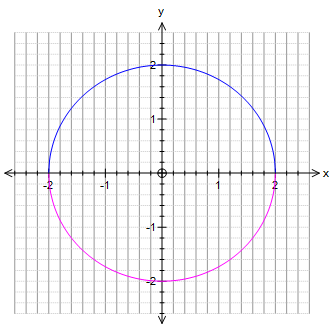



How Do You Graph X 2 Y 2 4 Socratic




Find The Volume Bounded By 4z 16 X 2 Y 2 And The Plane Z 0 Using Double Integral Mathematics Stack Exchange




The Differential Equation X 2 Y 2 Y Xy Is Chegg Com




An Example Of A Hyperbola Of Equation X 2 A 2 Y 2 B 2 1 With Download Scientific Diagram



Chemarias Com Ebau 2bcpdf 2bclp8 Pdf




Cual Seria El Resultado X 2 Brainly Lat




Grafica Del Paraboloide Z X 2 Y 2 Funcion De Dos Variables Youtube




Solution Find The Equation Of The Normal To X 2 Y 2 5 At The Point 2 1



Solution X2 Y2 25 Is Solving This Problem Considered A Function How Do I Plot A Graph Using A Smooth Curve For This Problem Ed




I Love Mathematics All I Need Is X2 Y2 1 3 X2y3 0 فيسبوك



Prove That X 2 Y 2 C X 2 Y 2 Is The General Solution Of Differential Equation Sarthaks Econnect Largest Online Education Community




Answered Find The Points On The Cone Z2 X2 Bartleby




If The Circles X2 Y2 2x 2y 7 0 And X2 Y2 4x




If Cos 1 X2 Y2 X2 Y2 Tan 1 A Prove That Dy Dx Y X Cbse Class 12 Learn Cbse Forum



Solved Evaluate The Following Differential Equations Variable Separable Homogeneous Equation X 2 Y 4x 2 7xy 2y 2 2 Exact Equation Cos X Si Course Hero




Superficies Cuadraticas Monografias Com




Convert A Rectangular Equation To A Spherical Equation X 2 Y 2 Z 2 0 Youtube



Using Integration Find The Area Of The Circle X 2 Y 2 16 Which Is Common To The Parabola Y 2 6x Sarthaks Econnect Largest Online Education Community



Sketch The Curve X 2 Y 2 3 4x 2y 2 In Polar Coordinates Mathskey Com




Ejercicios De Ecuaciones De Segundo Grado Superprof




Surfaces



What Is The Graph Of X 2 Y 2 Z 2 1 Quora



Chemarias Com Ebau 2bcpdf 2bclp8 Pdf




Write The Standard Form Of The Equation For The Chegg Com



How Do You Graph X 2 Y 2 1 Socratic




The Equation Of The Chord Of X2 Y2 4x 6y 3 0 Whose Mid Point Is 1 2 Isa X Y 1 0b 2x 3y




Ecuacion De La Circunferencia




Answers To The Review Problems For The First Exam 251 05 10 In Spring 06



Scarpelli Assignment 2




A Graph Of X 2 Y 2 9 Is Shown On The Grid By Drawing The Line X Y 2 Solve The Equations X 2 Brainly Com



Find Dy Dx When X And Y Are Connected By The Relation X2 Y2 2 Xy Studyrankersonline




F X Y X2 Y2 Geogebra




Soluciones Conicas



23 Match The Equation X 2 Y 2 Z 2 1 With Its Graph Labeled I Viii Toughstem
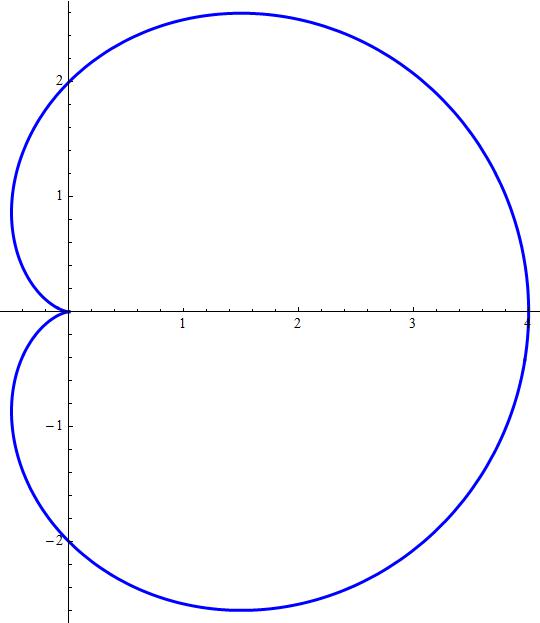



What Is The Graph Of The Cartesian Equation X 2 Y 2 2ax 2 4a 2 X 2 Y 2 Socratic




How Do You Graph X 2 Y 2 9 And What Are Its Lines Of Symmetry Socratic
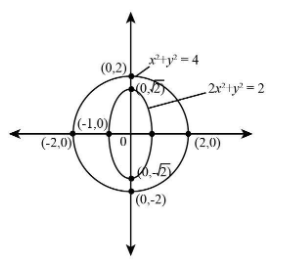



Find Common Tangent Of X2 Y2 4 And 2x2 Y2 2 Is Class 12 Maths Cbse




If X Y 2 2 X 2 Y 2 And X Y Lambda 2 4 Lambda 0 Then Lambda Is Equal To




Describe All Integral Solutions Of The Equation X 2 Y 2 2z 2 Such That X Y Z 0 Gcd X Y Z 1 And X Y Mathematics Stack Exchange




Circles




Solution Simplify X 2 3 X 1 3 Y 1 2 X 2 Y 2 2 3 1 2 6




Ex 8 2 2 Find Area Bounded By X 1 2 Y2 1 And X2 Y2 1




1 Trayectorias Ortogonales E X2 C Y D A 2 X2 Y2 D H De La



1




Implicit Differentiation



Smaller Area Enclosed By The Circle X 2 Y 2 4 And The Line X Y 2 Is Sarthaks Econnect Largest Online Education Community




Find The Center And Radius Of Each Circle X2 Y2 Chegg Com




Aplicando El Metodo De Reduccion Por Adicion X 2y 7 Y 2x 2y 2




X2 Y2 3 Y2 Z2 3 Z2 X2 3 2 23 2 23 53 3 X Y Scholr



Http Www4 Ujaen Es Angelcid Archivos Analisis Mat Ii 09 10 Practicas Practica6 Pdf




Find The Area Bounded By The Cirxle X 2 Y 2 16 And The Line Y X In The First Quadrant Youtube




Find The Area Of The Region X Y X 2 Y 2 8 X 2 2y




Graph X 2 Y 2 4 Youtube




Find Area Of Region Bounded By Curves X 2 Y 2 4 Y 3x And X Axi




Example 1 Find Area Enclosed By Circle X2 Y2 Examples



Q Tbn And9gctpagqdnveplli 4g 53true4si3uc Wz8ofe4rocvy A3ilx33 Usqp Cau




Circles
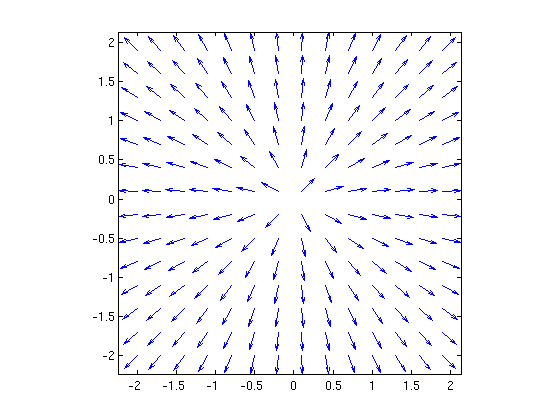



Vector Fields




Graph Equations System Of Equations With Step By Step Math Problem Solver




Find The Area Of The Region X Y X2 Y2 4 X Y 2 Mathematics Shaalaa Com



Solucionado Conica Secciones Es X 2 Y 2 1 Meramente
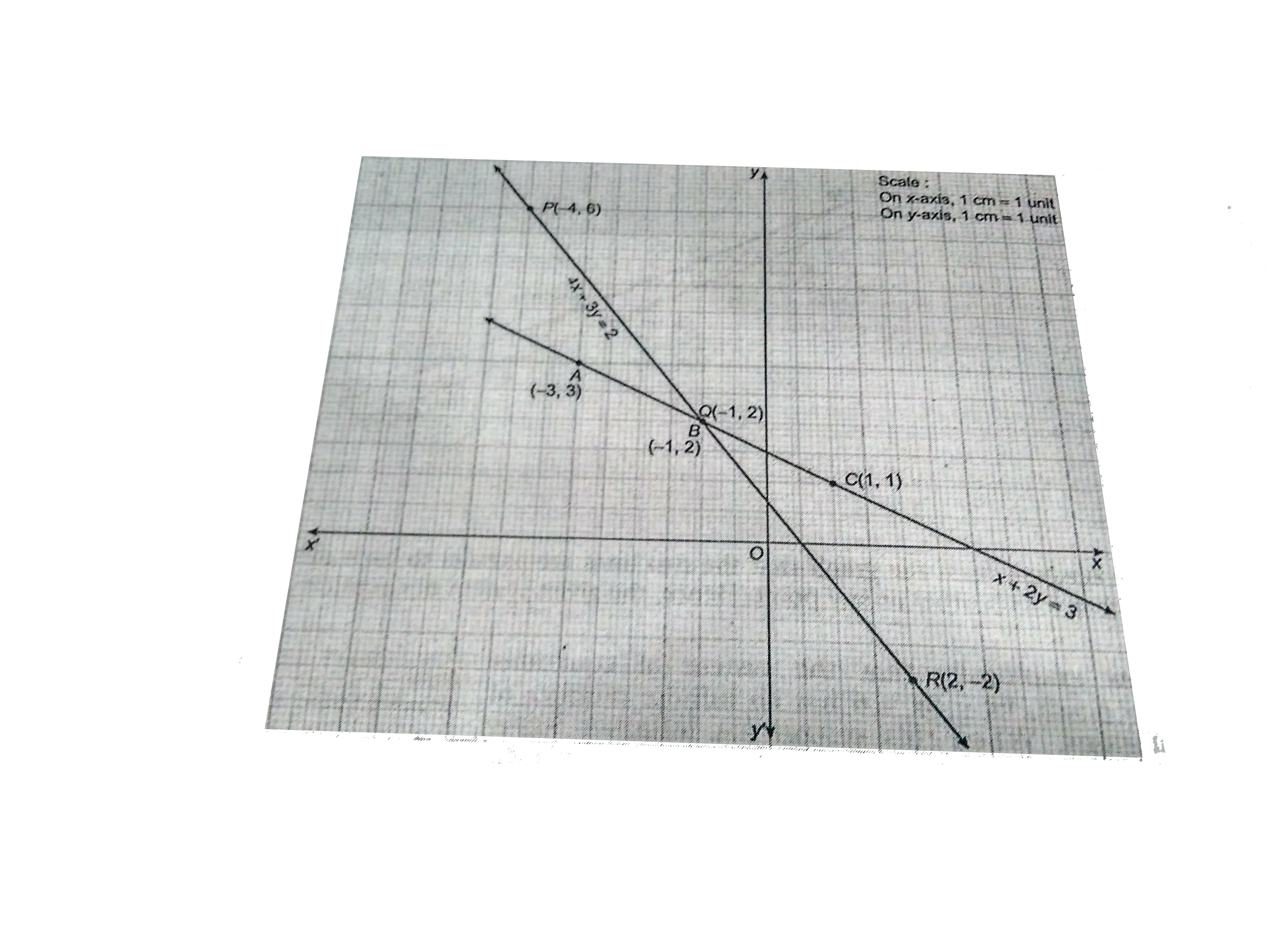



Show Graphically The System Of Linear Equations X 2y 3 And 4x 3y 2




Integrales Triples



Answer In Algebra For Dani Wagas




For Given Below Verify That The Given Function Implicit Or Explicit Is A Solution Of The Corresponding Differential Equation X 2 2y 2 Log Y X 2 Y 2 Dy Dx Xy 0 Mathematics Shaalaa Com



File Conic X 2 2xy Y 2 8x 0 Svg Wikimedia Commons




Find The Area Of The Region Bounded By The Curve Y 2 2x And X 2 Y 2 4x




How To Plot 3d Graph For X 2 Y 2 1 Mathematica Stack Exchange



Ellipses And Hyperbolae




Volume Of Solid W Delimited By Z X 2 3y 2 And Z 8 X 2 Y 2 Mathematics Stack Exchange




Equation Of An Ellipse X A 2 Y B 2 1 Geogebra



Solution I Need Help Graphing X 2 Y 2 2x 2y 2 I Also Need To Find The Intercepts




View Question 1 The Equation Of A Circle Is X 2 Y 2 4x 2y 11 0 What Are The Center And The Radius Of The Circle Show Your Work




Integrales Triples



Math Help



0 件のコメント:
コメントを投稿